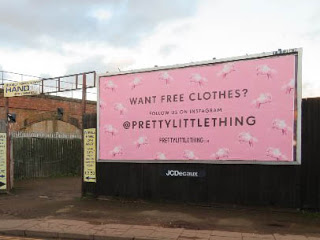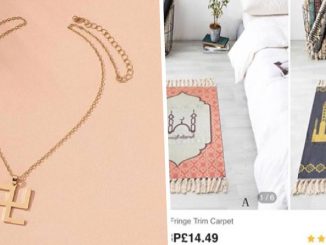
[dropcap][/dropcap]A recent “Pretty Little Thing” advertisement was banned after being deemed as being “overly sexualised”. The retailer argued that it had not intended to create an advertisement that was “offensive and irresponsible” but rather intended to “promote a positive and healthy body image that was inclusive and empowered women.”
The ASA (Advertising Standards Authority) stated that it was the presentation that was problematic and not the clothes themselves. The ad features a model surrounded by luminous poles. “We considered that the cumulative effect of the scenes meant that overall, the products had been presented in an overly-sexualised way that invited viewers to view the women as sexual objects.”
This is not the first time the popular online clothing brand has been in the spotlight for the wrong reasons. In 2017, an advert was also banned for portraying a model who appeared to be under the age of sixteen in a sexualised manner. Boohoo (the company that owns Pretty Little Thing) also came under scrutiny when it used the phrase “send nudes” in an email advert, that was later banned.
There is an extremely thin line between what is deemed as popular culture and what is seen as degrading, as is the line between creating a clever marketing idea and causing offense. The age old marketing 101 phrase “sex sells” may come to mind. This is a tool that has been widely used since the 1950’s. This was when the focus changed from featuring women as domestic goddesses and great mothers in an effort to sell products to presenting the public with a different, more independent kind of woman.
It is not only female clothing that has become more sexualised. Calvin Klein and Hollister are infamous for their scantily clad male modules, usually boasting an impressive physique. 1 in 6 men admit that “hunkvertising” has left them feeling self-conscious with over a quarter believing that male models are just as sexualised as female models.
Perhaps, presenting Pretty Little Thing as a scapegoat is oversimplifying the situation. In the advertisement we see an adult woman who is proud of her own body and her sexuality. We see an adult woman who is earning her own money from a worldwide ad. Pretty Little Thing is the clothing site that most “tweens” and teens use mostly on account of its reasonably priced clothing and its decision to use former Love Island stars and Instagram influencers as its promoters.
While an adult woman wearing a mesh suit can be seen as empowering, a sixteen-year old girl in the same outfit can create feelings of uneasiness. However, the responsibility lies with parents and guardians to ensure that children enjoy their childhood without it being over-sexualised and to explain the difference between reality and the often unrealistic expectations that are often presented online. This responsibility does not lie with an online clothing brand that targets its clothing towards women.
It might be worth to instead draw attention to the girls’ clothing section of many high-street shops. New Look stocks high heels in a size one (the typical foot size of an eight-year-old child) while Primark have come under scrutiny for its decision to stock padded bikini tops in the children’s sections. Many parents also question the logic behind WalMart’s decision to sell girls’ underwear with “Who needs credit cards” on the front and “when you have Santa” on the back.
Meanwhile, a woman should wear whatever makes her happy. Sex will always be an integral part of advertising. Roman female gymnasts wore bandeau tops and bikini bottoms in the fourth century and models in the 21st century can do likewise, if that is their choice.
Róisín Cullen
Image Credit: Flickr



